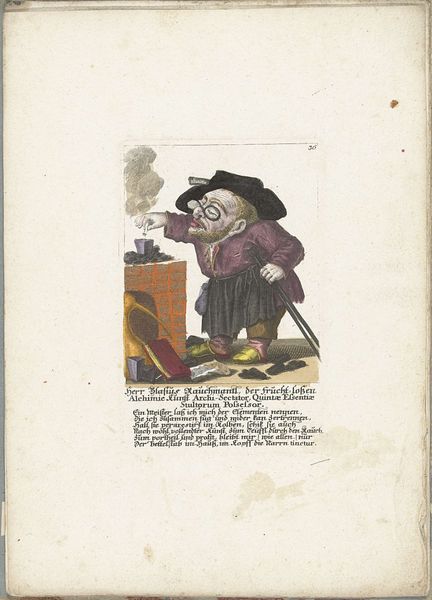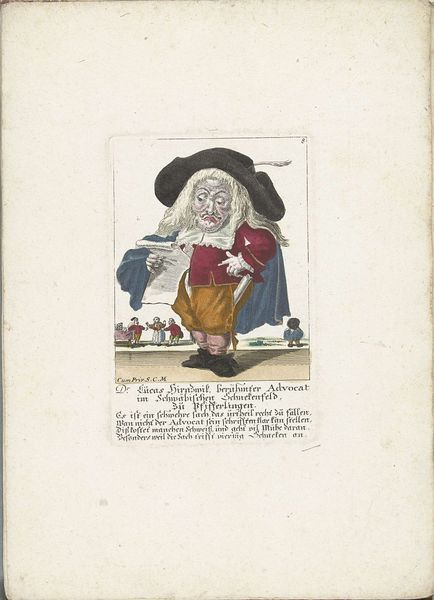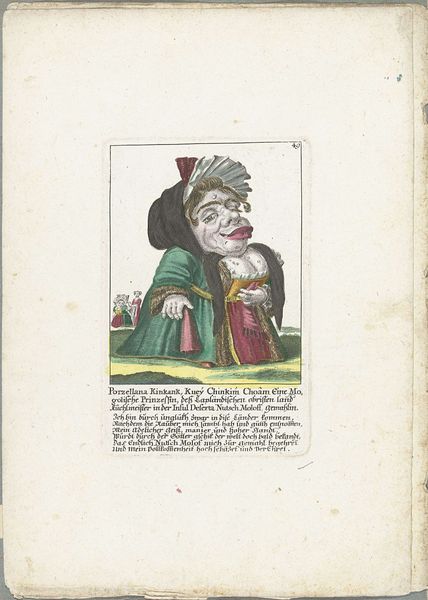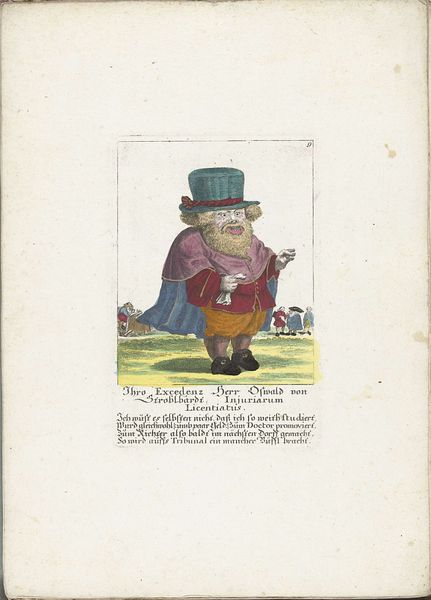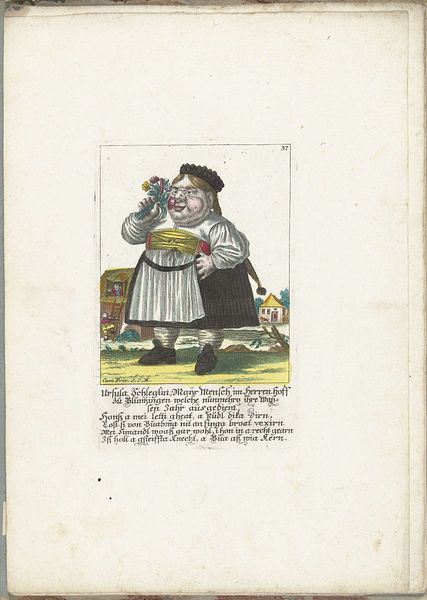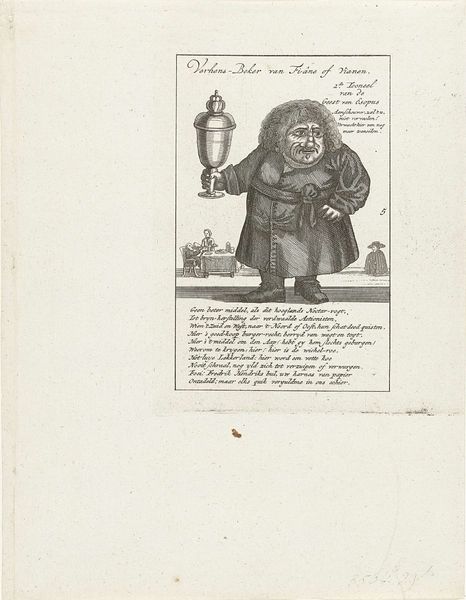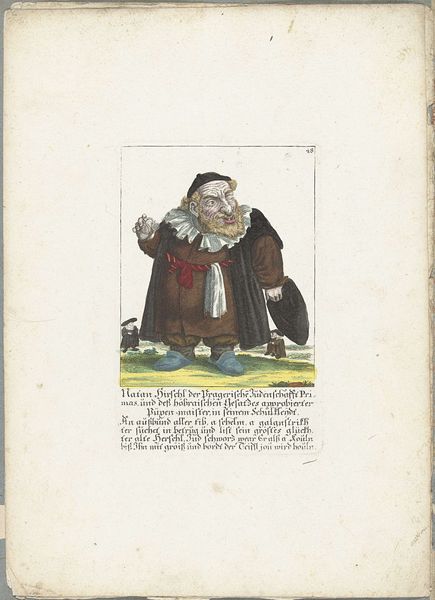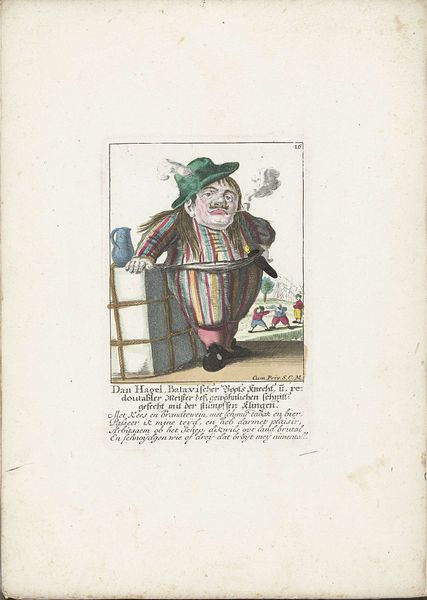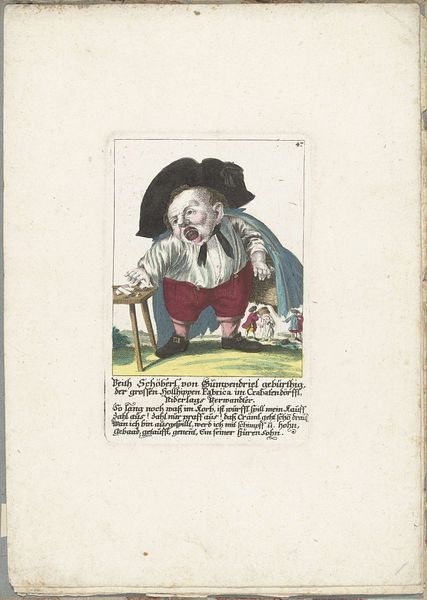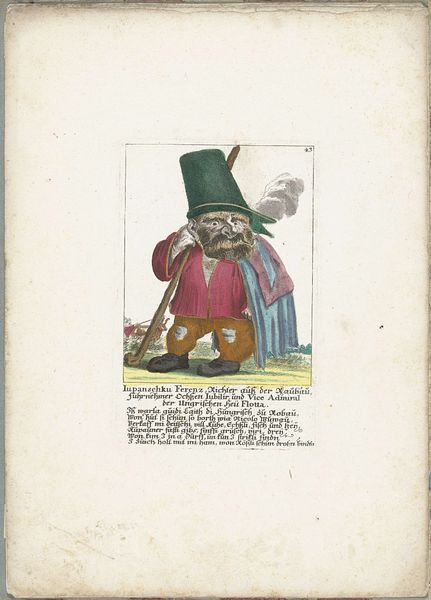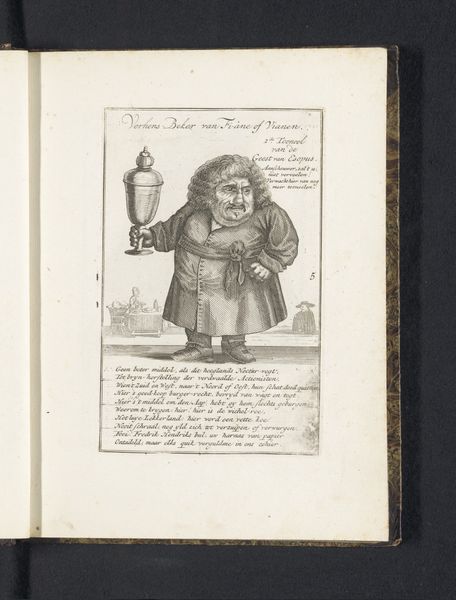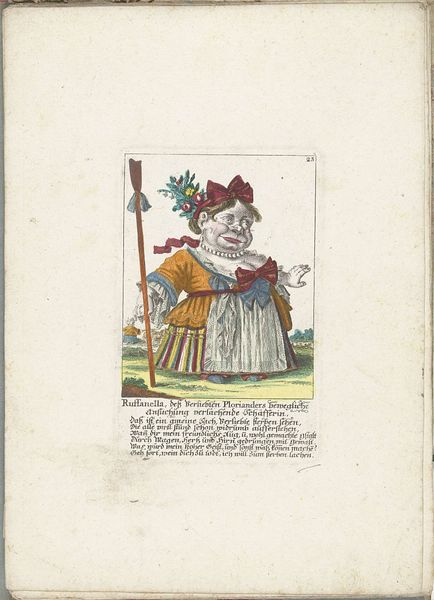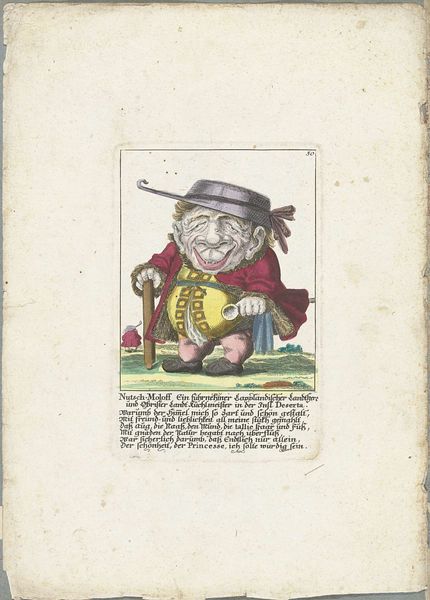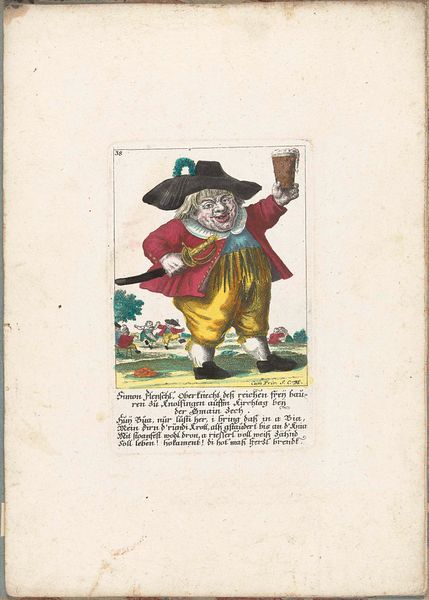
De dwerg Gustavus Weinberger als een geestelijke met een beker, ca. 1710 1705 - 1715
0:00
0:00
engraving
#
portrait
#
baroque
#
caricature
#
engraving
Dimensions: height 170 mm, width 110 mm, height 320 mm, width 225 mm
Copyright: Rijks Museum: Open Domain
Editor: So, this engraving is called "De dwerg Gustavus Weinberger als een geestelijke met een beker, ca. 1710" – which translates to "The dwarf Gustavus Weinberger as a clergyman with a beaker," and it’s by Martin Engelbrecht. It feels almost like a political cartoon. What do you see in this piece that really speaks to its historical context? Curator: The caricature immediately jumps out. These types of images, while humorous to a modern eye, were often tools of social commentary and critique. How does this portrayal of Gustavus Weinberger, seemingly mocking his physical appearance and status, reflect broader societal attitudes toward religious figures or perhaps even disabled individuals during the early 18th century? Editor: It’s unsettling to think this could be mocking someone. Is it possible there’s another layer? Curator: Absolutely. Engelbrecht, situated within the visual culture of the Baroque period, used this form of popular imagery. What details tell you something about the period beyond the clothing? The drinking chalice, for instance, relates directly to religious practice, particularly the sacrament. It prompts questions about the artist's intentions – are they critiquing the Church through the figure of Weinberger, or perhaps lampooning specific aspects of religious rituals? Editor: So it’s more than just a funny picture; it's engaging with real power dynamics and perhaps critiquing social institutions of the time. Curator: Precisely. Engelbrecht uses caricature as a form of public discourse. Recognizing those social critiques enhances our comprehension. Editor: This artwork shows that sometimes humor has a serious undercurrent tied to specific historical and political situations, providing commentary through caricature. Thank you for enlightening me! Curator: My pleasure! The past continues to shape how images were, and still are, produced and perceived.
Comments
No comments
Be the first to comment and join the conversation on the ultimate creative platform.
